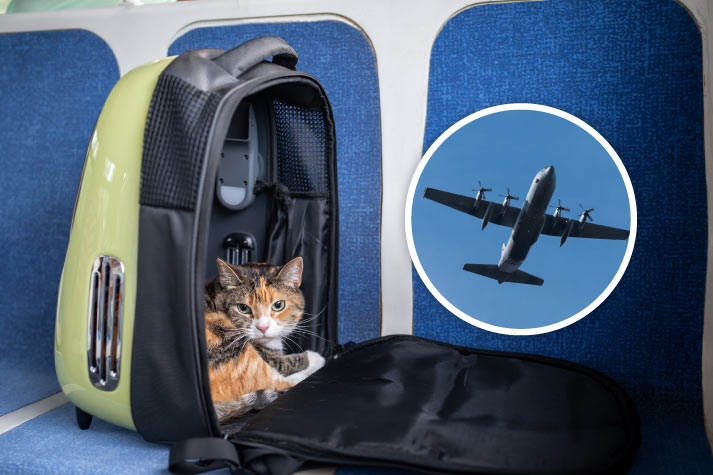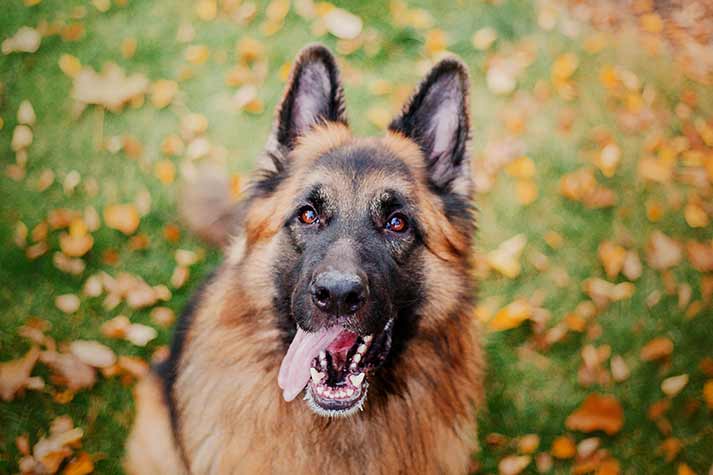
10 Feb
Can My Pet Fly Alone?
If you’re planning for pet travel, chances are you’ve asked this question as well – can pets fly alone? Simply put, the answer is yes! Since it is not always possible for a pet to fly in-cabin with their owner or be on the same flight as accompanied baggage, pets can fly on their own as “unaccompanied” cargo. While this may sound daunting, it’s far from it. Provided you plan your pet’s travel and fly with a pet friendly airline, you should have no trouble in international pet travel.
Do I Need to Fly with My Pet?
If your pet cannot fly with you in-cabin or as accompanied baggage, they can travel as cargo. One benefit of this is that you need not be on the same flight as your pet, which allows for some flexibility in scheduling. Pets travelling as cargo don’t need to travel on the same day as their owner; they can even be on a different flight altogether.
Pets travelling in cargo is a relatively common occurrence when it comes to pet travel, as there are plenty of reasons why a pet parent would choose to do so. Time constraints, immigration formalities, professional requirements, or personal situations ae all reasons why your pet may not be able to travel on the same flight as you. Regardless of the situation, it is perfectly normal for your pet to not be on the same flight as you.
Where Does My Pet Fly in Cargo?
The word ‘cargo’ may flood your mind with images of a small, simply lit section of the aircraft where suitcases and bags endlessly pile over each other, but the reality is far from it. Pets travel in a temperature and pressure-sensitive cargo hold, meaning they breathe the same air as you do in the cabin.
Provided you've chosen a pet-friendly airline, such a hold will always be pressurized and temperature-controlled for your pet's safety and comfort while in transit. Your pet’s crate will be secured by netting that acts as a seatbelt and ensures their crate does not move about while flying.
Why Should I Transport my Pet in Cargo?
In the pet transportation and live animal shipment space, there is a constant back-and-forth over whether pets should travel in a cabin with passengers or be shipped in the cargo hold, which is usually located in the belly of a commercial aircraft.
As unlikely as it may seem, cargo can often serve as an ideal if not perfect replacement for in-cabin pet travel. For most international pet relocations, travel in the cargo hold is the only feasible option, with airlines stating that pets are not allowed inside the cabin when on international routes.
Given the nature of an international move and all the change that comes with it, it is natural that the flexibility offered by cargo can be appealing to pet parents. For example, you may have booked your tickets for an international journey, only to find out that the airline does not transport pets internationally; in such a case, your pet will likely have to travel as cargo.
The best thing you can do is to provide your pet with crate training well in advance. Since your pet will need to be inside their crate for the duration of the journey, it is beneficial to train your pet to be comfortable inside a crate.
Once your pet has been trained successfully, they will happily spend long durations inside it, especially if it smells and looks familiar. Most of the time, it isn’t the crate itself but the conditions surrounding it that cause undue stress to pets, which is why a pet-friendly airline is necessary to minimize exposure to such conditions.
There are many preconceived notions about pet travel. Some say pets should only fly in cargo, some maintain pets should never be separated from pet parents. The point here is that either mode is equally safe, with an equal number of benefits and drawbacks which could cause your pet stress, so you should choose the mode that best suits you plan and your pet, and ensures they have safe and comfortable pet travel.
How Can I Book My Pet’s Flight?
If you’re choosing pet transportation via cargo, your move will often be managed by the cargo/skycargo division of the airline. This will require a separate booking, which can be made either by pet parents themselves, or in rare cases, must be made by an international pet travel professional. These specifics of this process may vary from destination to destination, so make sure to do your research.
If you’re making your own booking, keep all the details handy, such as your pet’s age, weight, pet crate size, pet crate weight, health certificate, vaccination record, and any other documentation the airline requires. Once you’ve made your booking and the airline has confirmed it, you will receive an airway bill number, which is essentially your pet’s ticket.
Regardless of the mode you end up choosing or what pet friendly airline you choose, the priority is always your pet’s safety and comfort while travelling. Provided you make decisions with your pet’s safety & comfort in mind, you should have no trouble with international pet travel. Make sure to always choose a pet friendly airline for pet travel.






AUTHOR’S BIO
Carry My Pet
Passionate pet enthusiasts and globetrotters, dedicated to easing furry friends' journeys worldwide. Penning tales of compassion at CarryMyPet, where every relocation is a tail-wagging adventure.